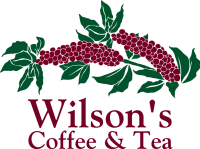Crafting a Competition Roast
by Neal Wilson
I don't often participate in coffee roasting competitions and when I do enter those I try to treat it as a fun activity rather than something to be taken too seriously. I've also generally avoided entering the big events with lucrative prizes so if any would be major competitors are reading this, maybe take my thoughts with a heaping tablespoon of salt.
Every coffee roasting competition works a little differently and often there are rules that introduce a larger measure of luck than I'd like to see. That makes it difficult to be especially proud of a win or overly disappointed by a loss, but redefining the goal as having fun rather than trying to optimize for a win opens up a lot of room for creativity in roasting that many who are more active in the competition circuit overlook. I hadn't realized just how bad that had gotten until I was on the judging panel for the 2017 United States Roasting Championship (USRC) competition.
From my perspective as a judging panelist in the 2017 USRC, the way this worked is a group of judges would taste and evaluate several brewed coffees. In some judging sessions this was a compulsory coffee which every competitor used and in others it was a coffee chosen by the competitor. Once that initial evaluation of the brewed coffee was finished, each competitor had an opportunity to talk about their entry, how they chose to approach roasting that, and what they expected judges to taste in their entry. While the initial coffee evaluation was performed without knowing who roasted the coffee, during the presentation judges tasted the coffee again as a way of conveniently checking if the competitor's description of their coffee matched the coffee they presented. There were several categories of details that judges were expected to notice in order to award points. Accuracy in describing the coffee was a major source of points lost, but there was another detail shared in each of the presentations I judged which I found deeply disturbing. When describing their approach to roasting the coffee, at least among the competitors I judged, there was not a single one who spoke to the decision of how light or dark they wanted to roast the coffee. This is shocking because while there are other roasting decisions that will impact the flavor of a coffee, this question of how dark you want to roast the coffee has the greatest impact on every sensory aspect of a coffee. Put another way, if you want to change how a coffee tastes, the easiest thing to do is roast that lighter or darker. All of the other decisions of how to reach that final roast level such as how much time the coffee should stay in the roasting machine, how the curve of temperature over time should be shaped, or how airflow and agitation are managed can produce tastable differences which may be important, but do not have nearly the same impact on flavor as simply roasting the coffee lighter or darker.
For the compulsory rounds that I judged in that competition, every competitor chose something in a rather narrow band of light roast possibilities, and this seemed unfortunate as the coffee was an unusually dense Colombian coffee. Many competitors expressed how that presented challenges in getting the coffee to behave how they wanted it to behave in the roaster and as I continued tasting these very light coffees and listening as many of those competitors reached for flavor descriptors that simply did not match what could be observed in the cup, I couldn't help but wish that somebody had considered taking that coffee darker, perhaps developing fewer distinct flavors, but choosing which smaller set of flavors to develop to greater intensity. After the competition I was able to track down some people who had experience with that coffee outside of a competition environment and conversations with those people seemed to confirm that there was solid potential in roasts that were darker than any I tasted in the competition.
Had there been any talk of trying different roast levels, an activity that is easy with several of the machines competitors were using, I'd more readily accept that they all thought the coffee performed best at a lighter roast, but without those details it mirrors something that I often hear when listening to competitors preparing their strategy. There is a widespread belief that the people judging coffee roasting competitions score lighter roasts higher. Depending on the exact scoring rules there may even be justification for that position. One of the common tools for scoring coffees is the cupping form. Several of these forms exist and many of them separate several distinct attributes of a high quality coffee. For example, the widely used SCA cupping form specifies 10 categories: Fragrance/Aroma, Flavor, Aftertaste, Acidity, Body, Sweetness, Clean Cup, Uniformity, Balance, and Overall. Each category is worth up to 10 points and there are places on the form that don't influence the score to better document more specific qualitative aspects of the coffee. That's a form that works very well as a way of determining whether a coffee sample meets requirements documented in a contract or to gather some of the relevant information for deciding which of several coffees a roasting company might want to purchase, but it's intended to be used with a standardized approach to roasting to evaluate qualities of the coffee rather than the skill of the roaster. It's not a great choice of form for choosing among different possible approaches to roasting a coffee. Many coffee roasting competitions recognize that and modify that form, removing attributes that have more to do with the choice of coffee than how that coffee was roasted, and changing the proportion of the score for the remaining attributes. It's also important to understand how specific categories are scored. For example, on the SCA cupping form, there's a place to mark the intensity of the acidity. As a general rule, that's going to be higher for lighter roasts and lower for darker roasts, seeming to give a scoring advantage to light roasts, but intensity isn't the scored attribute. It's the quality of that acidity within the overall context of that coffee. A high intensity acidity that is unpleasant should score lower than an acidity that is less intense but more enjoyable. The meaning of the scored attributes and the changes to the form often mean that lighter roasts do not have an intrinsic advantage. Of course, none of that matters if none of the competitors examine those possibilities. As a judge, I wouldn't score a coffee lower only because it's not a light roast and as a competitor, the majority of my wins have been with coffees that I would not consider a light roast. One win even came with some very dark roasts.
When organizing a coffee roasting competition that includes a compulsory coffee, someone needs to choose which coffee that's going to be. It's a way of giving competitors a more even playing field as everybody is starting from the same coffee. That prevents the competition from being all about who has the best connections and the deepest pockets to source their coffee, and it provides a way for the competition to present a specific yet unstated challenge. An excellent quality coffee that performs best with whatever the currently conventional or popular approach to roasting is at the time is, in my opinion, a lousy choice for the compulsory coffee in a coffee roasting competition. A far better way to test the skill of a coffee roaster is with a coffee that greatly benefits from unusual roasting techniques or coffees that have unusual physical properties that cause that coffee to behave strangely in the machine. The unstated challenge then is either maintaining control over a coffee that takes heat strangely or recognizing the potential for excellence beyond easier approaches to coffee roasting and acting on those possibilities. All of those background details come to mind when I'm deciding how I want to approach my entry in a coffee roasting competition.
Before COVID-19 stopped all of the trade shows, I learned about a small roasting competition one of my suppliers was holding right before the start of a major trade show originally scheduled in April. This was a small, fairly informal competition. I'd already made travel arrangements and would be in the city when that competition took place and it seemed like the sort of thing I'd find fun. If I won something, that's great. If I didn't, I'd get to hang out and taste the other competition entries, maybe learn something new. I signed up for the competition, received 20Kg of the compulsory coffee in fancy boxes, and intended to ignore the coffee until closer to the competition date. Of course, when the trade show in April was canceled, the competition was tentatively rescheduled for August, hopefully happening at another event I try to attend each year, but August events were also canceled and I don't think anybody involved wanted to continue ignoring the coffee until it was a past crop offering and competing to discover who could best roast an aging formerly excellent coffee so the competition was canceled and I was left with 44 pounds of this coffee and no reason not to treat this exactly how I would have approached my competition entry and selling the result to my customers.
The coffee was the Aura Matina Premier Cru A48 from Fazenda Rio Verde in the Mantiqueira hills of Brazil. The red acaia coffee was meticulously harvested, cleaned, and sorted, dried in its fruit, and the small lot was packed in 10Kg nitrogen flushed aluminum bags further protected by an outer box rather than the more common 60–70Kg jute bags that most of my coffees arrive in. I had two of these boxes and had not roasted or tasted any of it.
When working with a new coffee, the first thing that I want to do is taste that coffee across a range from hopefully lighter than I want to roast the coffee through darker than I want to roast the coffee with several roast levels between those. This allows me to discover how the flavor and aroma of the coffee changes as the roast progresses through that light to dark range. For this batch I'm using the Diedrich IR-1 profiling lab roaster. This is set up so that temperature measurements are matched to what they would be on the larger production roaster and the large trier at the front of the machine allows me to pull out several samples during a single roast. I usually pull 12 distinct roast levels from a 2 pound batch. This approach is very efficient as I'm getting those 12 roast levels in the time it takes to roast a single batch while only using a small amount of coffee. As for the timing of how the temperature of the coffee changes during the batch, this is something that I'm not especially concerned with while doing an initial exploratory batch. I want to stay within a set of roasting parameters that I know I can achieve on the larger machine just in case I happen to find exactly what I want, but I'll get clues for how I might want to adjust the timing of the roast as I'm tasting these initial roast level samples.
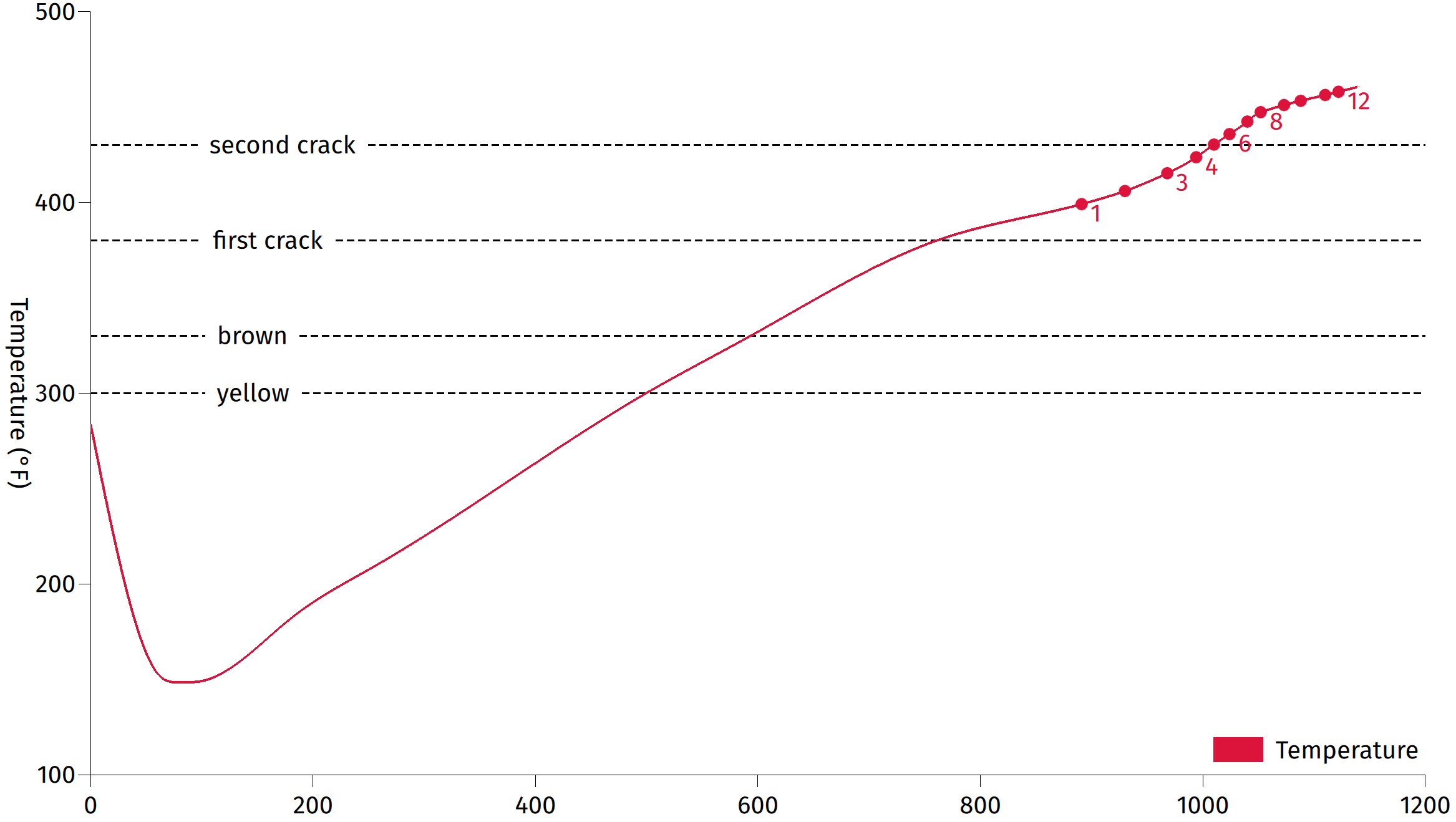
For this first batch, the ground coffee smells pleasant across the entire range with a citric fragrance in the first 6 samples which is especially potent on samples 3 and 4. For this coffee, the aroma of the brewed coffee stayed similar to the fragrance of the dry grounds, but with the addition of melon aromatics with the exception of sample 3 which is very cleanly citric.
After the potent aromatics, the flavor was generally disappointing, lacking in intensity, but it was still possible to pick out a few interesting possibilities. For a light roast, sample 3 holds up best from this batch with citric highlights over a medium body and smooth mouthfeel. Sample 6 is where the overall flavor intensity is at its best with a sweet melon flavor still present. Sample 8 works as something on the lighter side of a dark roast with a smoke note that adds complexity without fully masking the underlying sweetness of the coffee.
At this point it's obvious that I'm working with a very high quality coffee with a lot of potential for different flavor expressions, but there are also good reasons to believe that this could be roasted better. I can narrow the range under evaluation, change up the timing a little bit, and run another small batch through the lab roaster, pulling another 12 samples out to get some roast levels between the ones I've already evaluated and observe how a change in the timing affects this coffee.
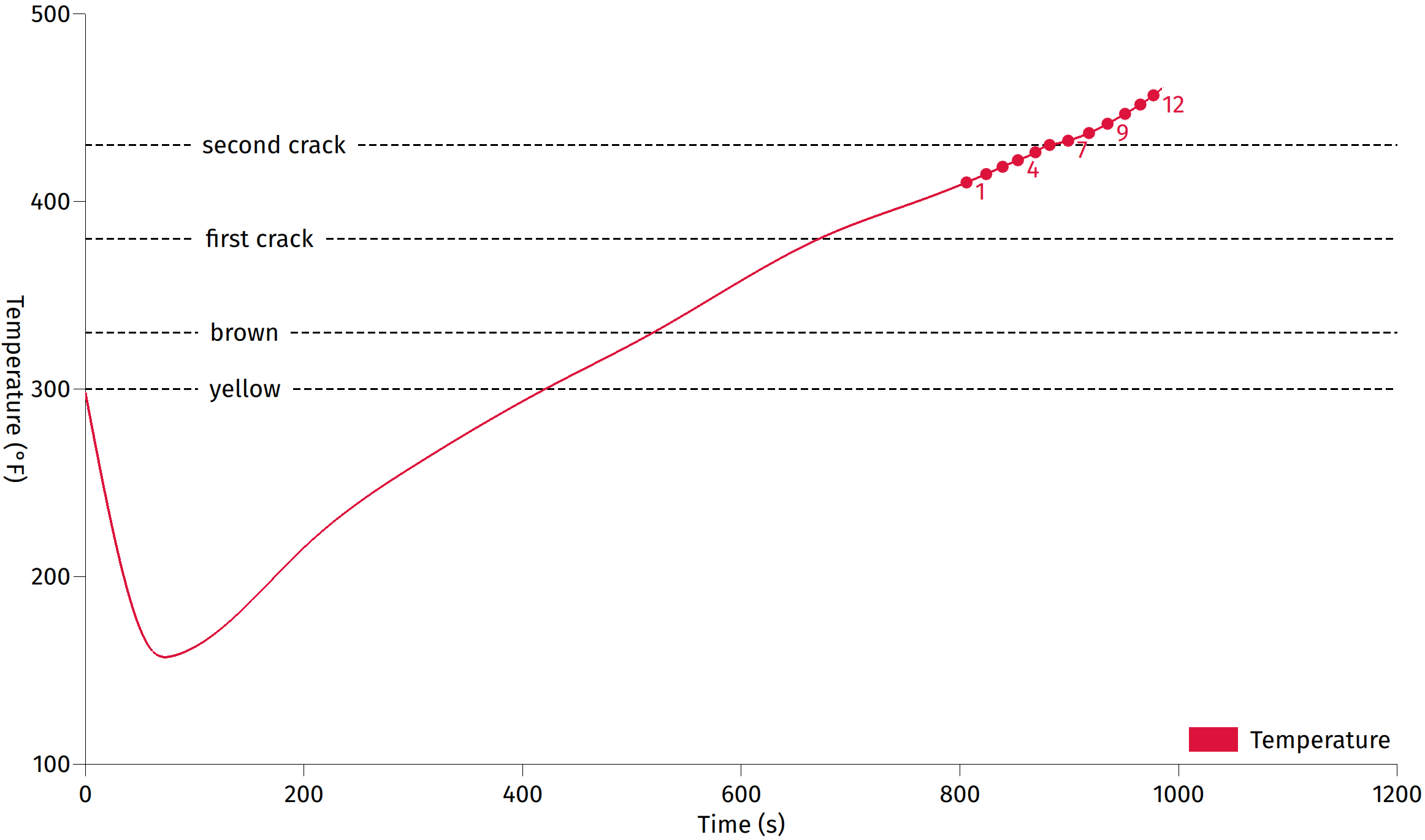
This batch demonstrated that it's possible to trade aroma for flavor as the intensity of aromas diminished compared with the previous batch, but some samples showed an improvement in flavor intensity.
| Sample | Description |
|---|---|
| 1 | a bit papery, too light |
| 2 | improved acidity, start of citric flavor, lacks intensity |
| 3 | improved body, increased intensity, citrus and melon, green grape finish |
| 4 | continued improvements in body, acidity, and overall intensity |
| 5 | great balance, good body, muted sweetness, muted fruits |
| 6 | sweetness improved compared with 5 |
| 7 | across the board quality improvements compared with 6, distinct melon, best intensity |
| 8 | slight smoke, improved complexity |
| 9 | smooth and sweet with a bit of melon, well balanced dark roast |
| 10 | lacks balance, disjointed flavors |
| 11+12 | flavor intensity diminished |
Samples 4, 7, and 9 are holding up best in this batch, but I'm still not quite where I want to end up with this coffee.
When thinking about the timing of a roast, it's useful to consider different regions where different kinds of coffee roasting chemistry occur. Changes in these different regions result in different kinds of sensory changes. Adding or removing time to bring the coffee through a range of temperatures early in the roast results in different flavor changes than the same timing change in the middle or at the end of the roast. Many roasters break this down into three parts, but there are real advantages to considering at least 5 distinct ranges.
Green: This is the range at the very start of the roast. It's possible to introduce roasting defects here and there are physical changes which, if allowed to progress too far, can impact later roasting chemistry, but there's a timing range that's much wider than people who haven't tested this might expect where differences in the timing have no perceptible impact on the flavor of the finished coffee. It is, however, possible to make mistakes in this range that directly make it impossible to match later parts of the roast where significant roasting chemistry is happening. The approach to this range is all about setting yourself up for success in the following ranges, managing the energy in the roasting system so you don't end up in a situation where applying full heat is still too slow or cutting heat entirely is still too fast. On my machines this range ends when the coffee reaches 300°F.
Yellow: Before the coffee turns brown, it changes color to yellow. Changes in this range have a substantial impact on the perceived sweetness of the coffee. With the first two batches, the coffee progressed through this range in 94 and 98 seconds respectively, which is close to what I consider a generally good starting point of 100 seconds, but with this coffee I want to move in the opposite direction, pushing through this range a bit faster. The melon flavor was pleasant, but I think this can be transformed into something nicer with a faster approach. On my machines, this range ends when the coffee reaches 330°F.
Brown: At 380°F on my machines there is a major physical change to the coffee known as first crack. My brown range ends at that point. For the next trial, I want to stretch this range out substantially as the first of two parts aimed at balancing aromatic and flavor intensities.
Between Cracks: First crack refers to a set of physical changes in the coffee. Steam pressure inside the cells combined with changes in the cell walls allows some of those cell walls to burst, creating a distinct crackling noise and a rapid loss of moisture in the coffee. That loss of moisture causes a large change in the heat transfer characteristics of the coffee that some find difficult to manage. As the second part of my strategy for balancing flavor and aroma intensities with this particular coffee, I want a slow, steady, controlled acceleration into and through this range. This range ends either at the end of the roast or once the coffee reaches a temperature of 430°F on my machines.
Second Crack: Not all roasts reach second crack, but among those that do and especially among roasts that go substantially beyond the start of second crack, it makes sense to consider the timing of this range separately.
For my third batch in the lab roaster, I've cut back on the number of cups pulled so I have more time to pay attention to controlling the roast.
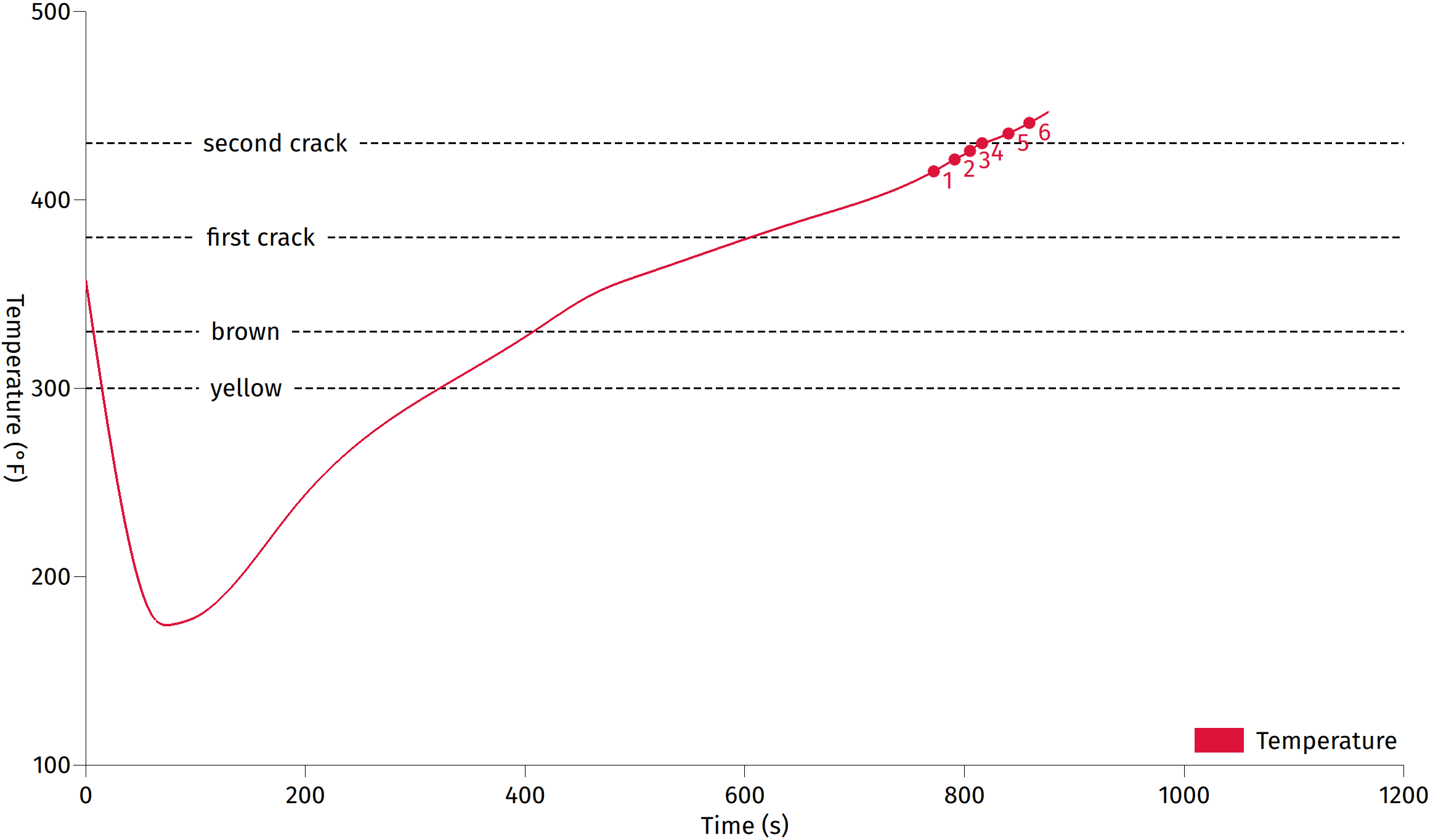
These changes did exactly what I hoped, keeping the fragrance and aroma at intensities even higher than the first batch. I was getting fruity aromatics on the early samples and chocolate aromatics on the later ones. Every single one of the samples from this batch was enjoyable to drink without any distracting unpleasant attributes, but some of these samples are nicer than others and at the end of this process I do need to decide on a single roasting plan.
| Sample | Description |
|---|---|
| 1 | Mild with a slight caramel sweetness. |
| 2 | Improved flavor intensity, apple flavor. |
| 3 | Smooth, greater intensity on the apple flavor. My preference for a light roast. |
| 4 | Great improvement in body, brings back the caramel sweetness, rich textured coffee with a lot of complexity. |
| 5 | Flavor stabilizes around the previously noted apple flavor with an overall intensity that is still good, but not as good as sample 4. |
| 6 | Similar to 5 but with further reduced intensity. |
Anything in the range of samples 3–5 would be good, but the complexity of sample 4 was the deciding factor. I decided to push the profile changes from the third batch just a little more, stretching time while the coffee is brown and moving through the time between cracks just a little faster while also paying more attention to ensuring the plan is easy to reproduce on the larger roasting machine.
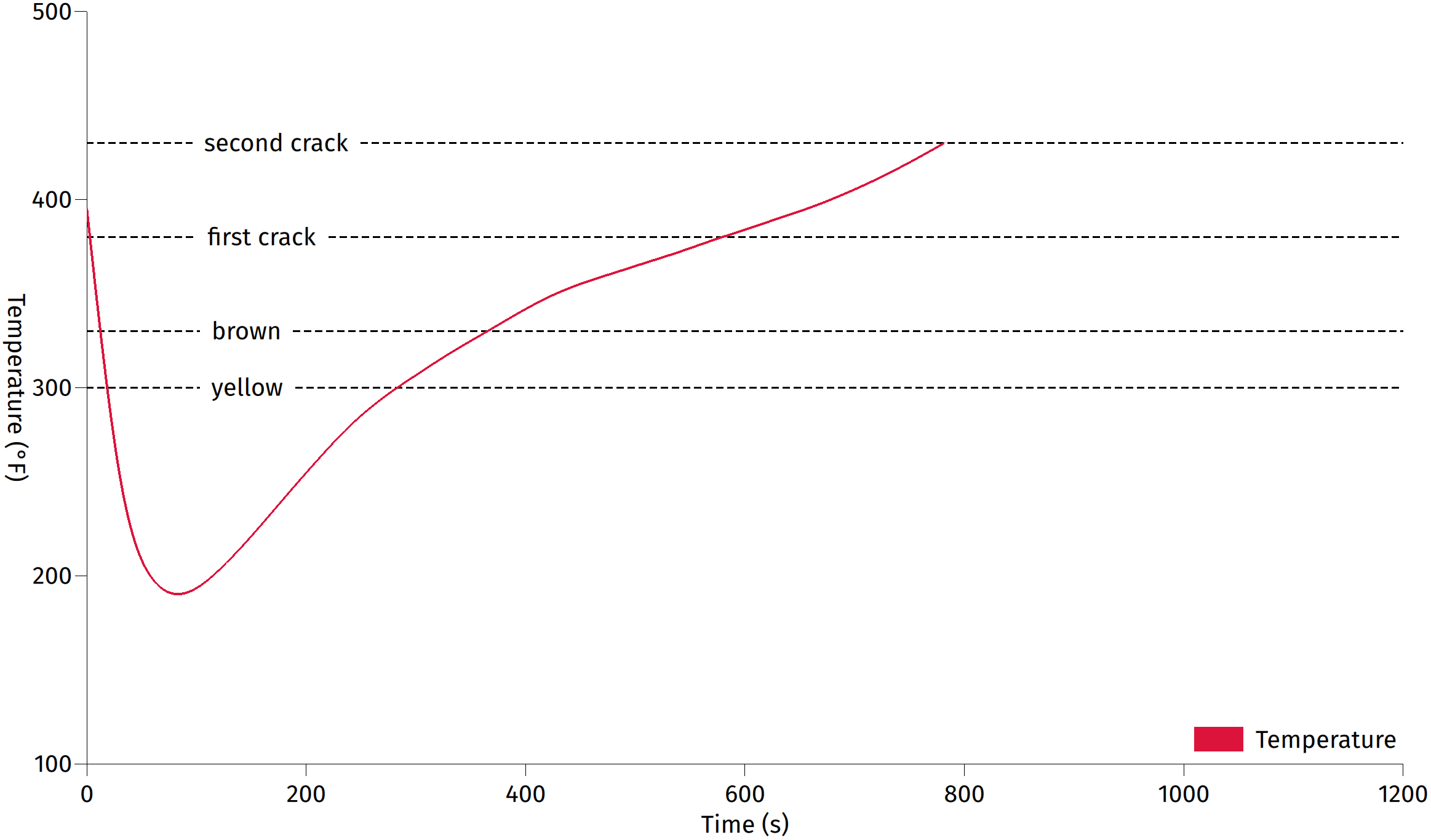
For this fourth batch I've moved to an 8 pound batch size on the Diedrich IR-12 (maximum capacity 30 pounds) and I'm evaluating this production test roast by brewing a pot of coffee and drinking that as a customer might. The introduction of a paper filter results in a flavor that changes less as the coffee cools, but I'm very happy with the result. Had the competition not been canceled, this would have been my entry. I think it would have a good chance of placing well, but we'll never know.
This process left enough coffee to produce 30 pounds of roasted coffee available to sell. That sold out very quickly so this coffee is no longer available.
If you enjoyed this article and want to read more about my approach to coffee roasting, I've recently written an ebook that is currently in editing. You can learn more about that at https://roastingbook.coffee/rcpd/ and sign up to be notified when that's available to purchase.
